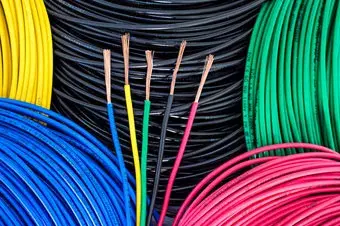
PHD Cable
A cable is a flexible and insulated assembly of wires used to transmit signals, data, or electrical power from one point to another. Cables are used in various applications, including telecommunications, electronics, power distribution, and networking.
Description
A cable is a flexible and insulated assembly of wires used to transmit signals, data, or electrical power from one point to another. Cables are used in various applications, including telecommunications, electronics, power distribution, and networking. They come in different types, each designed for specific purposes. Here's an overview of cables: Types of Cables: Power Cables: These cables are designed to carry electrical power from a power source to various devices and equipment. They are used for both residential and industrial applications. Communication Cables: These cables are used to transmit signals, data, and information. They include: Coaxial Cables: Used for transmitting high-frequency signals, such as in cable television (CATV) systems. Ethernet Cables: Used for networking and internet connectivity. Fiber Optic Cables: Transmit data as light signals through optical fibers, offering high bandwidth and long-distance capabilities. Telephone Cables: Used for telephone communication. Control Cables: These cables are used to transmit signals to control and operate machinery and equipment. They are common in industrial automation and process control systems. Instrumentation Cables: Used for transmitting signals from sensors and measuring instruments to control systems and display devices. Audio and Video Cables: These cables transmit audio and video signals between devices, such as speakers, TVs, monitors, and audio equipment. Submarine Cables: Used for undersea telecommunications, carrying signals and data between continents. Heating Cables: Also known as heat tracing cables, they are used to prevent freezing or maintain specific temperatures in pipes, roofs, and other structures. Cable Components: Conductors: Wires within the cable that carry electrical current, signals, or data. Insulation: A protective layer around the conductors to prevent short circuits and ensure proper signal transmission. Shielding: A layer of material that protects against electromagnetic interference (EMI) and radio frequency interference (RFI). Jacket or Sheath: The outer layer that protects the cable from mechanical damage, moisture, and environmental factors. Cable Specifications: Gauge or AWG (American Wire Gauge): Represents the size of the wire conductors. Smaller gauge numbers indicate thicker wires. Number of Pairs: In communication cables, pairs of wires are twisted together to reduce interference. Bandwidth and Data Rate: Important for cables used in data transmission, such as Ethernet and fiber optic cables. Voltage Rating: The maximum voltage the cable can safely handle. Bend Radius: The minimum radius a cable can be bent without causing damage to the conductors or insulation. Installation and Care: Proper installation techniques ensure optimal signal transmission and safety. Cables should be protected from physical damage, moisture, and extreme temperatures. Cable management solutions are used to organize and secure cables in residential, commercial, and industrial settings. Cables are essential for modern communication, power distribution, and connectivity. Choosing the right type of cable for a specific application, along with proper installation and maintenance, ensures reliable and efficient performance.